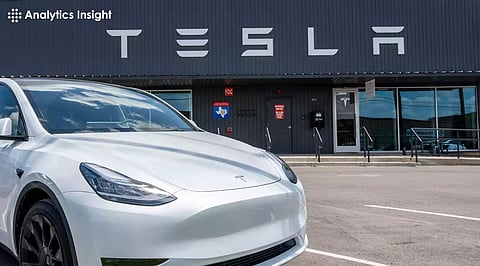

The Chinese Electric vehicle (EV) market is in turmoil. Once unrivalled at the top, Tesla now finds itself also under threat from Chinese manufacturers forging ahead and remaking the sector. And lately, research published up to and including 2025 reveals that BYD, NIO, XPeng and Li Auto are very quickly narrowing the gap. With innovative strategies and robust government support, these firms are challenging Tesla’s global dominance.
Key Trends in the EV Market
Rapid Domestic Growth:
In 2024, China’s EV market expanded by 28%, according to Bloomberg’s January 2025 report. In contrast, Tesla’s global market share dropped from 18% in late 2023 to 14% in early 2025.
Shifting Consumer Preferences:
EV-Volumes data reveals that Chinese EV makers now command over 60% of the domestic market, while Tesla’s share in China has fallen below 20%.
Sales Surge:
Statista reported that while Tesla sold approximately 1.2 million vehicles globally in 2023, sales for leading Chinese brands increased by 35% year-on-year in 2024.
The trends point out from previous market dynamics where the Chinese EV makers considered the localization conditions and the policy support in reaching the market.
Innovative Strategies Driving the Shift
Chinese manufacturers are not simply competing on price in an EV sector that is being flipped on its head, it is also bringing forth cutting-edge innovations to shift the balance.
Technological Advancements:
Companies like XPeng and NIO invest heavily in autonomous driving systems, smart connectivity, and battery innovations. Their focus on software integration and advanced sensors offers features that rival Tesla’s Autopilot.
Local Partnerships and Supply Chain Optimization:
Firms such as BYD and Li Auto have forged strategic partnerships with technology providers and energy companies. These collaborations optimize production efficiency, enhance battery recycling processes, and improve the charging infrastructure. BYD’s integration of battery recycling technology is a prime example of how these companies reduce costs and increase sustainability.
Government Incentives:
The Chinese government’s policies, including subsidies, tax breaks, and supportive regulations, have given domestic brands a competitive edge. This government backing fuels consumer confidence and drives aggressive market expansion.
Tesla’s Response and Challenges
Now, Tesla is continuously innovating in its Gigafactories, working on ambitious battery technology research. Currently, it has massive hurdles ahead.
Supply Chain Disruptions: In both recent reports from Reuters and in the midterms, the Tesla supply chain challenge in China could slow down the hiring pace in the region.
Rising Competition: In the past, Tesla had a monopoly in China, but it doesn’t any longer with Chinese EV manufacturers being much more advanced both in technology and consumers’ interest. For Tesla to survive the competition, it will have to adapt its pricing strategy and use innovations.
Need for Adaptation: “Tesla’s ability to innovate will be tested as Chinese manufacturers continue to catch up,” stated an analyst from McKinsey in February 2025. Tesla now faces the challenge of balancing quality with affordability in a rapidly evolving market.
Points of Contention for Tesla
Declining Market Share in China: Despite being a global leader, Tesla's shares in the Chinese electric vehicles industry have eroded. The consumption of local EVs is increasing as it is offering comparable, if not superior features at reasonable prices.
Technology Gap: While Tesla pioneered the EV revolution, its competitors are now closing the technology gap and coming up too close to Tesla. Further favouring the Chinese manufacturers are improved autonomous features, better battery technology and localized production.
Regulatory Landscape: Domestic production remains a favourite of the Chinese government’s proactive policies. A more favourable regulatory environment for local EV makers will be further facilitated by supportive measures in terms of creating cost reductions and encouraging innovation.
Below is a comparative overview of Tesla and its leading Chinese EV competitors based on recent market data:
Analysis and Key Points:
Market Share Shift:
As per recent data, Chinese EV makers have made significant gains, collectively taking a higher share of the domestic market—-above 60%, while Tesla’s share in China has dropped close to 15%. Consumers’ inclination to purchase locally produced vehicles and price competitiveness, has also contributed to this.
Sales Performance:
The sales of EVs are growing annually by leading Chinese brands like BYD, which has been selling around 400,000 units per year compared to around 200,000 units per year for Tesla. Other Chinese brands such as NIO and XPeng also have steady growth, which shows a solid demand in the Chinese market.
Technological and Strategic Advantages:
Chinese manufacturers are not only focused on volume but also innovation. Items such as NIO’s battery swapping and XPeng’s level of autonomous driving are key differentiators. In the meantime, Tesla has maintained a strong brand and technological leadership in the global market although it’s being killed bit by bit by the local competitors.
Conclusion: A New Era of Global Competition
The evidence suggests that Chinese EV makers are making a very formidable challenge against Tesla. With the domestic market in China becoming increasingly saturated with new and innovative local brands, Tesla’s global position is being severely pushed. Now, China’s manufacturers are quickly catching up with Tesla, thanks to the combination of advanced technologies and strong partner and government support.
In order to retain its place in the market, Tesla now has to innovate to keep its lead, and not just preserve its share of the market in key areas such as China, as the next few years will be a critical period in EV landscape evolution. This dynamic shift is a transformative period as Chinese EV makers have an opportunity to help redefine global market leadership for the industry and investors.
